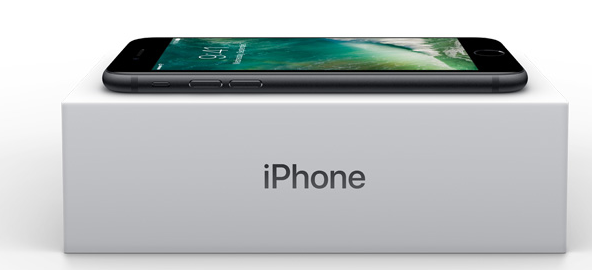

As I have countless times over the past 30 years, I made the pilgrimage from Silicon Valley to San Francisco on Wednesday to attend an Apple announcement.
It’s a privilege to be able to attend and report on an Apple event from inside the hall, not just to listen to Tim Cook and, until 2011 the legendary Steve Jobs, but to be around all the incredibly talented engineers, designers and managers behind some of the world’s most beloved products from one the world’s most successful companies.
Now that Apple is streaming its announcements, anyone can get a good virtual seat at this event without having to put up with traffic, parking hassles and crowds. But the best part of these announcements is when the press is invited to go to a side area to get some hands-on time with the new products.
Admittedly, spending a few minutes tapping on the virtual keyboard of a new iPhone 7 is far from getting to truly know the device. As any good product reviewer will tell you, it takes some time living with a piece of technology to truly understand its strengths and shortcomings. But being able to “kick the tires” gives those of us in the media our first opportunity to proclaim whether we think these products will be hits or misses.
This isn’t a review or even a first look, but I can’t argue with Tim Cook who proclaimed the iPhone 7 “the best iPhone that we have ever created.” That’s true with every new iPhone, except those designed specifically to be cheaper than others in the line. If it weren’t Apple’s best iPhone, what would be the point of bringing it out?
It would also be fair to say that the iPhone 7 is among the best smartphones ever created, but I’m not prepared to declare it the absolute best. That would require a point by point comparison with other premium phones, some of which – like Samsung’s flagship Galaxy S7 devices – are also water resistant and have excellent cameras, gorgeous displays and equally stratospheric price tags. And, like the iPhone, Samsung supports an eco-system of companion products including watches and, in Samsung’s case, a virtual reality headset.
To me, the big question is not just how well the new iPhones compare with other premium phones in the $650 to $900 price range, but how they compare with the phone you already have, along with the growing number of phones that cost under $400.
Let’s start with that phone you have. Rather than thinking about your phone, think for a moment about your other devices such as your refrigerator, microwave oven, bicycle or even your car. While none of these other product categories evolve as quickly as smartphones, there are regular innovations and, if you were to shop around, you would find some pretty cool new offerings for every one of these categories.
I recently attended the IFA Consumer Electronics Show in Berlin where companies like Samsung and LG showed off home appliances alongside personal tech products and – at just about every booth – I saw refrigerators, stoves and even coffee pots that were significantly more advanced than the ones in my house. But my refrigerator still chills my food and my stove heats it up and even though there are some really amazing coffee makers out there, I don’t feel compelled to replace mine, just because it’s a few years behind the times. I don’t even feel compelled to replace that flat screen TV I bought about eight years ago, even though the new ones have four times the resolution.
Yet, when it comes to smartphones, there is the expectation that we need to upgrade at least every two years, if not annually. Apple even has a “get a new iPhone every year” program, for those willing to spend a whopping $389 to $549 a year, depending on model and capacity.
Apple phones are great, but if you are shopping for a new phone and want the best value, don’t just go to the Apple store. Go online or to a store where they sell other brands. Forget the logo on the phone and look at its build, features, speakers, size, storage capacity, display, warranty and how it feels in your hand.
You might be surprised when you see phones from the likes of Motorola, Huawei, ZTE, LG, HTC, Asus, OnePlus and other makers who don’t have Apple or Samsung’s advertising budget but do have the ability to build high-quality phones that sell for $400 or less. Of course, none of these other phones run Apple’s iOS operating system but Google and its partners continue to improve Android, which in my opinion is also an excellent operating system.
Yes, I do like the new iPhone 7 and, especially the 7 Plus, but just because they’re “the best iPhone that (Apple) have ever created,” doesn’t mean they’re the best choice for everyone.